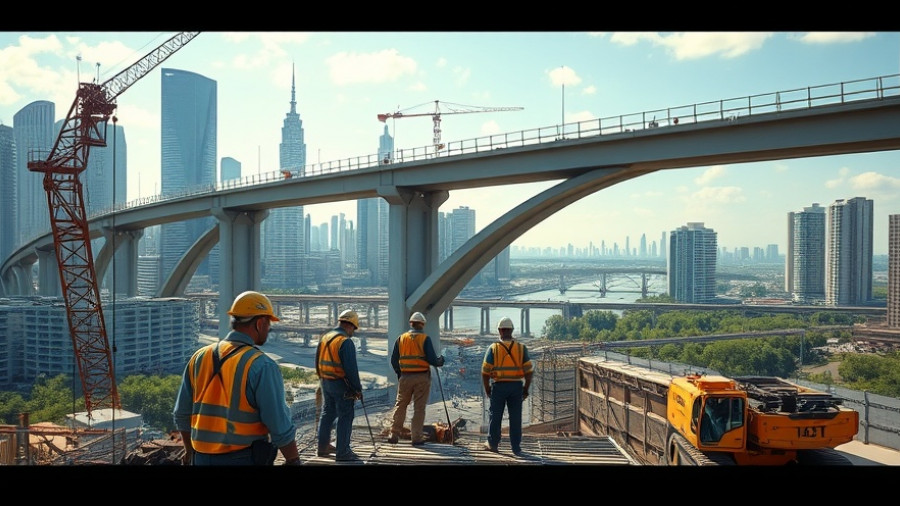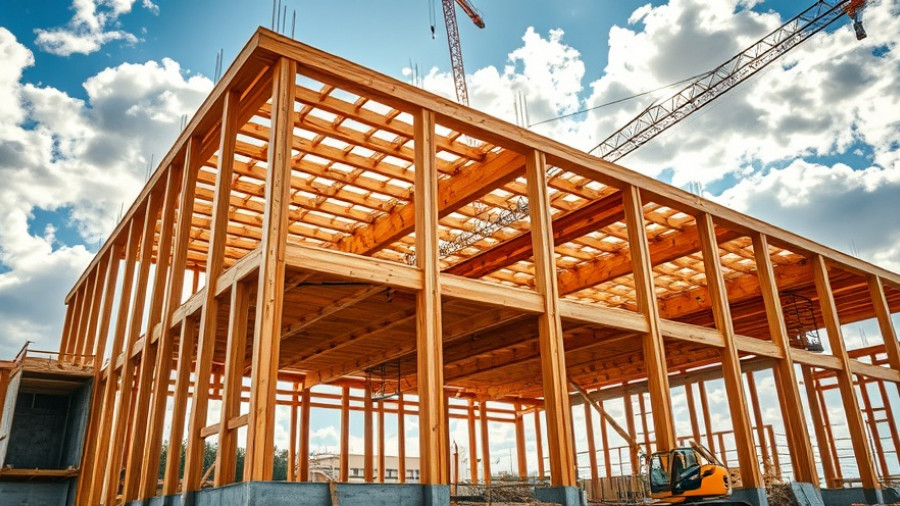
Unveiling the $60M Rothschild Dam Modernization Project
The landscape of construction in Wisconsin is set to transform with Tutor Perini's subsidiary, Lunda Construction, securing a $60.2 million contract aimed at rehabilitating the century-old Rothschild Dam. This endeavor is not only a leap forward in the structural integrity of local waterways but also a pivotal move towards modern infrastructure—something that both public and private sectors need to consider seriously.
Why the Rothschild Dam is More than Just a Construction Project
The Rothschild Dam has been a vital component in the region’s ecosystem since it was built in 1912, serving to power the Rothschild Mill and facilitating the pulp wood channeling. The modernization project seeks to replace the existing 276-foot wooden spillway with a contemporary concrete structure designed to withstand the challenges posed by climate change and aging infrastructure. According to Domtar, the forestry products company that owns the dam, the overall projected cost for this project could reach $84 million.
A Deep Dive into Project Management Best Practices
Leveraging Tutor Perini's expertise in construction management finance, Lunda's execution plan emphasizes strategic construction practices. The project entails significant undertakings including careful demolition, installation of deep foundations, and the use of cofferdams for river diversion. Such methods are not only about following construction protocols but also ensuring that environmental impacts are minimized—a critical aspect in today's socially conscious construction sector.
Impacts on Local Businesses and Homeowners
For local business owners, property developers, and community managers, the modernization of the Rothschild Dam holds promise for economic revitalization. Improved infrastructure often leads to increased property values and attracts new investments. Moreover, facility managers and homeowners should consider this project as a beneficial shift towards sustainable practices and resilience against environmental impacts.
Funding and Financial Insights around Infrastructure Rehabilitation
This project shines a spotlight on crucial financial aspects of large-scale construction. With an initial contract value of $60.2 million, alongside an anticipated total expenditure of $84 million, understanding cost management is essential for stakeholders. Executives need to conduct in-depth cost-benefit analyses when considering investments in similar projects.
Future Implications: Lessons from the Rothschild Dam
As technological innovations reshape the landscape of construction, projects like the Rothschild Dam serve as case studies in best practices. The successful implementation of updated infrastructure not only ensures operational efficiency but sets a precedent for future projects, encouraging sustainable building techniques and fostering community development. The insights inspired by the Rothschild Dam rehabilitation will be invaluable for stakeholders involved in construction and infrastructure management.
This project is a clarion call for executives, government entities, and businesses alike to reassess their engagement with infrastructure development. As we look ahead, integrating sustainability in construction is not an option but a necessity.
 Add Row
Add Row  Add
Add 




Write A Comment